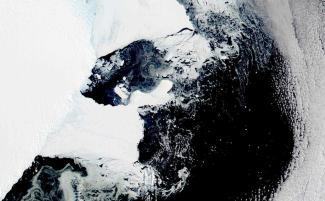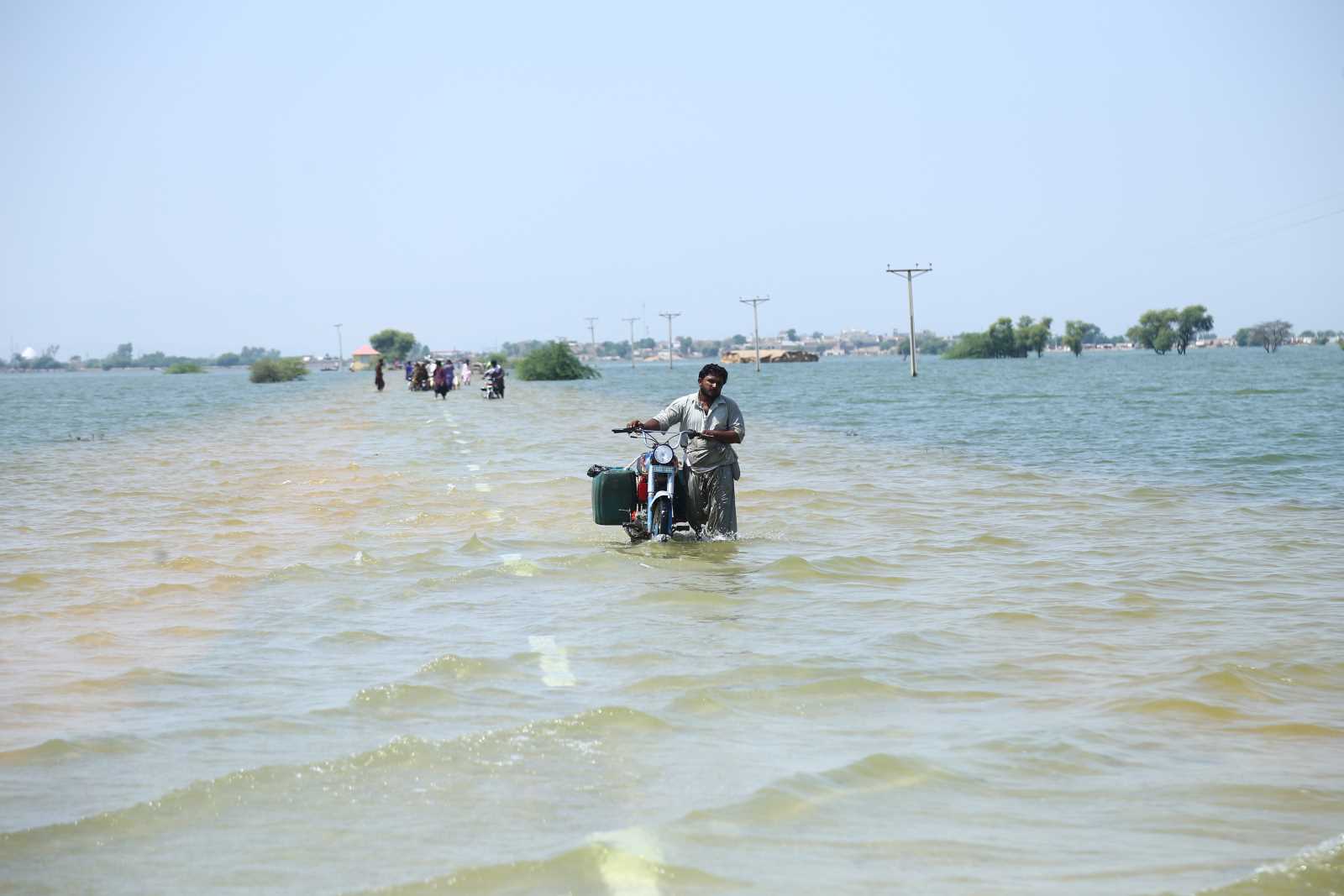Relevant reading
Climate hazards are increasing fast

Global ecosystems have already changed drastically. The ice on the Arctic Ocean has been reduced by about one half since satellite measurements started four decades ago, as the UN Environment Programme (UNEP) reported in its Foresight Brief 28 in January this year. Should temperatures keep rising at current rates, UNEP expects the Arctic Ocean to be free of ice by 2050.
The trend is evident in the Antarcticsa too. Since 1979, satellites never detected as little ice as today. The ice shield used to be thicker and extend further.
At the same time, forest fires are happening more often – even in areas, where they used to be quite rare. Increasing aridity, hot air, dry lightning and strong winds lead to longer fire seasons. In recent years, Australia’s East and the US west coast saw unprecedented and devastating blazes. If greenhouse- gas emissions are not reduced, disastrous wildfires may increase by one third until 2050 and even two thirds until the end of the century, according to a recent UNEP report (2022,2) on the matter.
Changing water cycles
In eastern Africa satellites currently register the worst heat and the least rainfall since the technology was introduced. Some 25 million people are reckoned to be exposed to food and water insecurity (see Christoph Schneider-Yattara onwww.dandc.eu) .
Water cycles are changing, making arid areas even drier. Devastating droughts are currently affecting parts of Latin America and western Asia too. According to a report on water published by the World Meteorological Organization (2021), 70 countries suffer drought in an average year.
On the other hand, torrential rains are haunting other parts of the world. South Africa recently saw its rainiest season in history – and it caused deadly flooding. In Sydney, Australia, this March was the wettest on record. Flash floods proved devastating. For the eastern USA, for example, 2021 was an unusually wet year. In India, there was 129 % more rain last September than normal. 2020 was the United Kingdom’s fifth wettest year, and six of the 10 wettest years occurred in the past 20 years.
Around the world, the number of flood disasters has increased by 134 % since the year 2000, according to the World Meteorological Organization, whereas the number and duration of droughts increased by 29 %.
1.5° threshold
In its 6th Assessment Report, the Intergovernmental Panel on Climate Change warns that, due to human activity, global temperatures have risen by 1.1°C since the industrial revolution began. Most likely, the threshold of 1.5° will be breached (see Roli Mahajan on www.dandc.eu). As UN Secretary-General António Guterres’ stated in his foreword, “we are on a fast track to climate disaster.”. He made an emphatic call to world leaders that “it is time to stop burning our planet and start investing in the abundant renewable energy all around us.”
Scientists warn that global heating will spin out of control and escalate irreversibly if we pass certain tipping points. Cascading impacts would thus result from the melting of Greenland’s ice sheet, the end of Ocean currents or the destruction of the Amazon rain forest. Experts reckon that a global rise of average temperatures by two degrees would probably be safe, but 1.5° is definitely safe.
To get a grip on the climate crisis, 195 countries concluded the Paris Agreement on Climate Change seven years ago. The stated goal was to keep global warming “well below two degrees” and, if possible, stay within 1.5°. Governments committed to drafting and implement actioning plans with nationally determined contributions to global climate action.
When the Glasgow climate summit took stock last year, failure was generally acknowledged. Assessing the summit result in a press release, for example, UNEP declared that the new and updated commitments of 120 countries would only reduce the emissions forecast for 2030 by 7.5 %. To limit global warming to 1.5°, 55 % would be needed.
The way forward
According to UNEP’s most recent emissions gap report, ten large economies account for two thirds of global greenhouse- gas emissions. China, the EU (counted as a single economy) and the USA are responsible for 41.5 %. UNEP insists that climate protection hinges on action in these huge markets – and that it is still possible to stabilise the global climate.
Nature-based solutions, renewable energies and energy efficiency all have great potential, according to UNEP. At the same time, forests and other eco-systems must be restored. The UN agency makes it quite clear that investments in fossil fuels must stop, subsidies for fossil fuels must stop and ultimately the usage of fossil must stop too.
Links
UNEP, 2021: Emissions gap report 2021.
https://www.unep.org/resources/emissions-gap-report-2021
UNEP, 2021, press release: COP 26 ends with agreement but falls short on climate action.
https://www.unep.org/news-and-stories/story/cop26-ends-agreement-falls-short-climate-action
UNEP, 2022: Foresight brief 28.
https://data.unep.org/article/foresight-briefs
UNEP, 2022,2: Spreading like wildfire – The rising threat of extraordinary landscape fires.
https://www.unep.org/resources/report/spreading-wildfire-rising-threat-extraordinary-landscape-fires
World Meteorological Organization, 2021: State of climate services – water.
https://library.wmo.int/doc_num.php?explnum_id=10826
Mahwish Gul is a consultant from Pakistan who specialises in development management. She lives in Nairobi.
mahwish.gul@gmail.com












